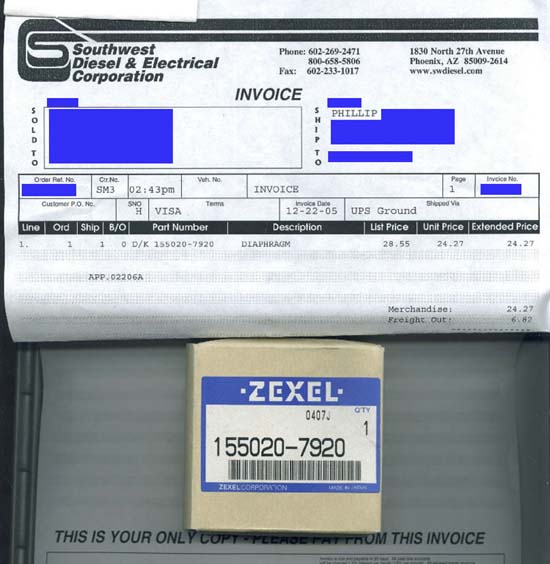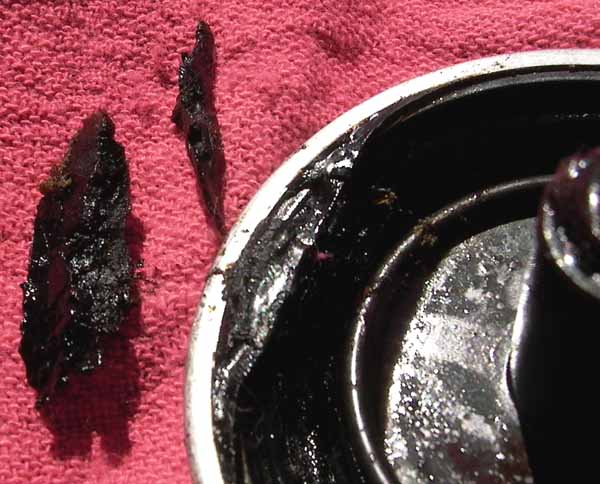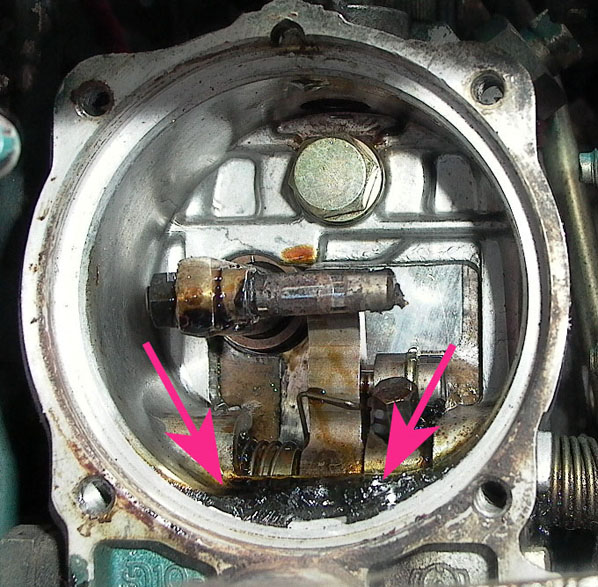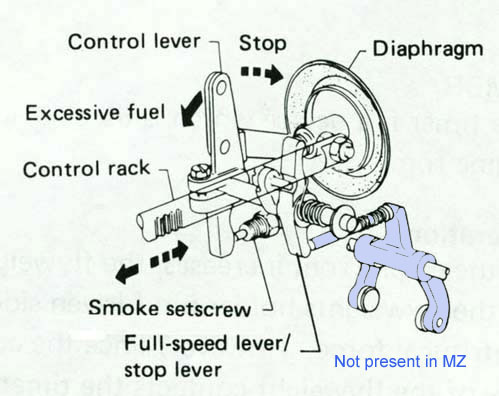Hello, Carey:
Cracked diaphragm = overfuelling at all but full throttle, and lots of black smoke. Stiff diaphragm (does happen) = poor throttle response, and I guess maybe surging -- Philip is the expert here.
For fuel starvation, it's relatively easy to diagnose this kind of thing. But you do need length of clear tubing and a special tool:
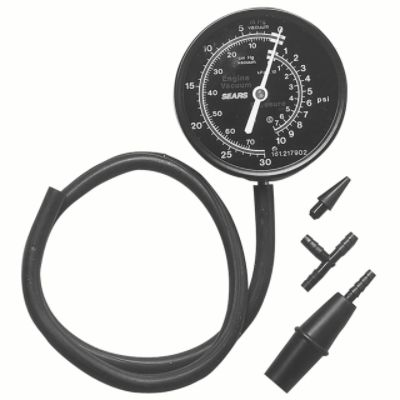
That one's $20 at Sears; you can buy them in the $14-40 price range anywhere, including the discount places. It reads both vacuum and low pressure.
First, use the clear tubing and graft it into one of the lines. I don't know that it's particularly important which one, but I think I'd start at the IP return line or the injectors return line. Run engine, watch for bubbles. Shouldn't be any. If you see some, look for leaks on the vacuum (suction) side of the lift pump and back to the primary filter, then the line to the tank, the rubber line at the top of the tank, and finally the tank pickup tube (on old Ford diesel trucks, the pickup tube breaks off in the tank and you can't run with less than 1/2 tank of fuel!).
No bubbles?
Tee into the line running into the primary filter, duct-tape the gauge to the windscreen, and drive. Pressure goes into vacuum more than 2"? Restriction in the line to the tank, in the tank itself, or the tank venting.
[
Related digression No. 1: I had a mud-plugged vent line on an '80 VW Rabbit diesel several years ago. I could drive and drive and drive, and the fuel gauge wouldn't drop below 1/4 tank -- and eventually I'd run out of fuel. Turned out the lift pump was providing enough vacuum to collapse the fuel tank -- the bottom of the tank was weakest, so it'd get pulled
up, and the sending unit's float would naturally go up with it. Took me forever to find that one -- and a couple of times running out of fuel on I-5 in the middle of nowhere provided some incentive! The fuel tank has an anti-spill valve to prevent fuel from venting in the event of a rollover. From that valve the vent line runs all the way from the fuel tank in the rear to the . . .
front bumper. I kid you not. And somehow (!) that rubber hose at the front bumper got plugged solid with mud. I don't even want to know.
Related digression No. 2: See also
the Ford Pickup/paper towel story.]
No vacuum? Move the tee between the primary filter and the lift pump, repeat. Should see pressure there, quite a bit actually. I'll throw out a number and say that anything over 3 PSI is fine.
Then move the tee between the secondary filter and the IP. Should see the same pressure at the last test. If not, restricted secondary filter.
If you get that far, you have fuel to the IP under pressure and you're still getting the "fuel starvation" symptom, the problem either isn't fuel starvation after all, or it's internal to the IP.
